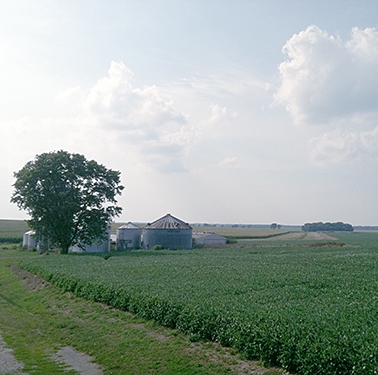Forecasting developments in production agriculture

On behalf of a private U.S. agricultural technology provider, WPI’s team generated an econometric model to forecast the movement of concentrated corn production north and west from the traditional U.S. Corn Belt. WPI’s model has subsequently provided quantitative support to a multi-million-dollar investment into short-season corn variety development. WPI’s methodology included a series of interviews with regional grain elevators and seed consultants. Emphasizing outreach and communication with stakeholders who possess intimate sectoral knowledge – on-the-ground insights – is a regular component of WPI’s methodologies, made possible by WPI’s ever-growing network of industry contacts.

 Ag as Affordability Solution Around 12 percent of Americans received federal food assistance (SNAP) and 10 percent are classified as living below the poverty line but financial analyst Michael W. Green has controversially calculated the threshold at $136,500/year. After all, a family of four li...
Ag as Affordability Solution Around 12 percent of Americans received federal food assistance (SNAP) and 10 percent are classified as living below the poverty line but financial analyst Michael W. Green has controversially calculated the threshold at $136,500/year. After all, a family of four li...
 Growth in retail sales lost some momentum in September, capping off what otherwise had been a solid quarter of spending for U.S. consumers. Looking at the headline, overall sales rose 0.2 percent in September – the fourth consecutive monthly increase – but lagged the consensus expec...
Growth in retail sales lost some momentum in September, capping off what otherwise had been a solid quarter of spending for U.S. consumers. Looking at the headline, overall sales rose 0.2 percent in September – the fourth consecutive monthly increase – but lagged the consensus expec...
 Dry-bulk markets are firmer this week with the Capesize sector again leading the rally. Capesize rates saw support from stronger volumes from East Australia and the Pacific with Brazil and West Africa seeing demand for LH December and January positions. Panamax markets were firmer with growing...
Dry-bulk markets are firmer this week with the Capesize sector again leading the rally. Capesize rates saw support from stronger volumes from East Australia and the Pacific with Brazil and West Africa seeing demand for LH December and January positions. Panamax markets were firmer with growing...
 U.S. financial markets are closed for the U.S. Thanksgiving holiday on Thursday, 27 November. Consequently, WPI’s offices will be closed as well and no issue of Ag Perspectives will be published. Ag Perspectives will resume Friday, 28 November. We wish everyone a happy holiday! ...
U.S. financial markets are closed for the U.S. Thanksgiving holiday on Thursday, 27 November. Consequently, WPI’s offices will be closed as well and no issue of Ag Perspectives will be published. Ag Perspectives will resume Friday, 28 November. We wish everyone a happy holiday! ...